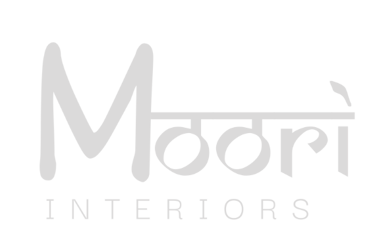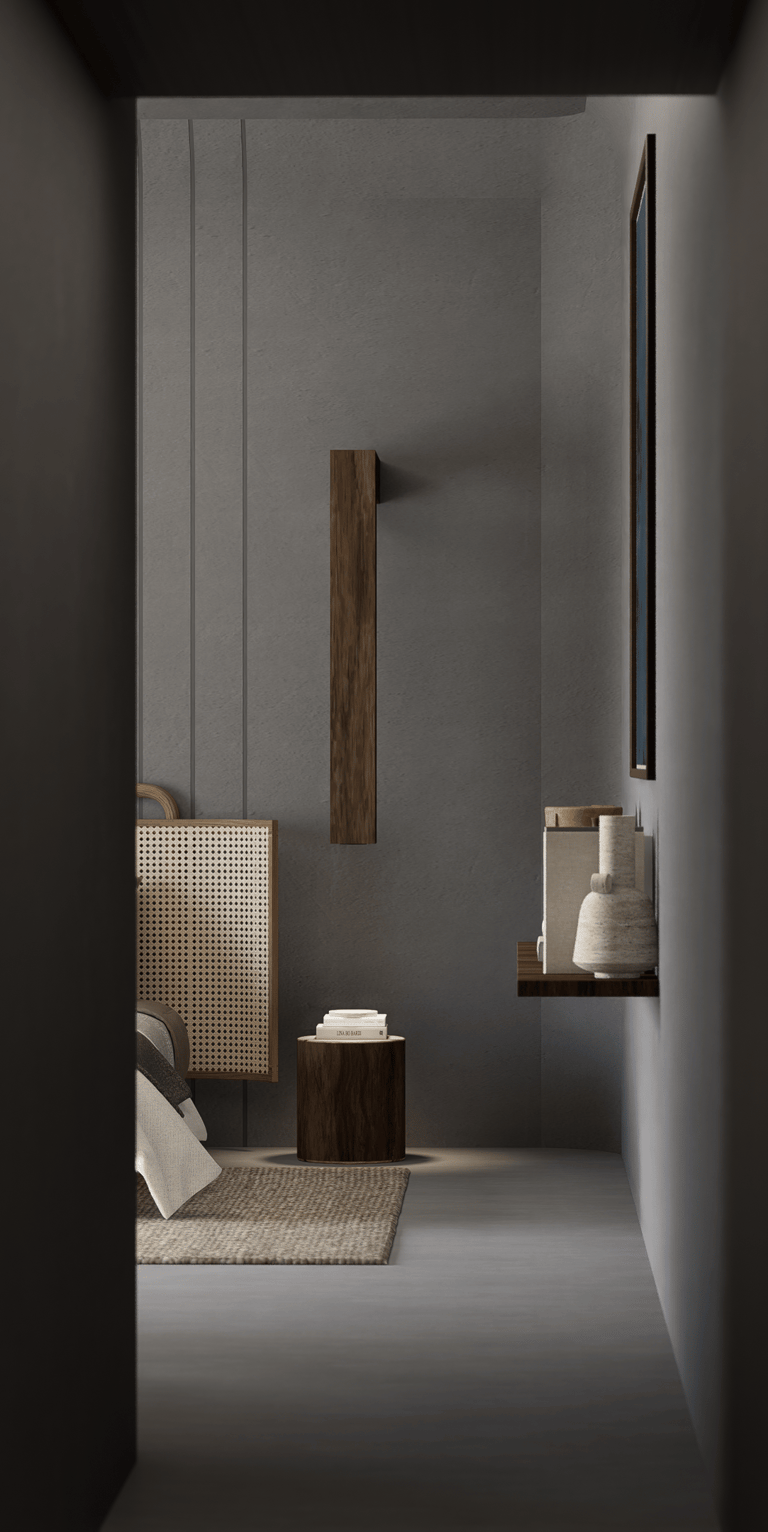Etihad House – The Confluence of Past, Present, and Future
Etihad House is a concept proposal by Moori Interiors for House of the Future, blending Emirati heritage, sustainability, and innovative design solutions.
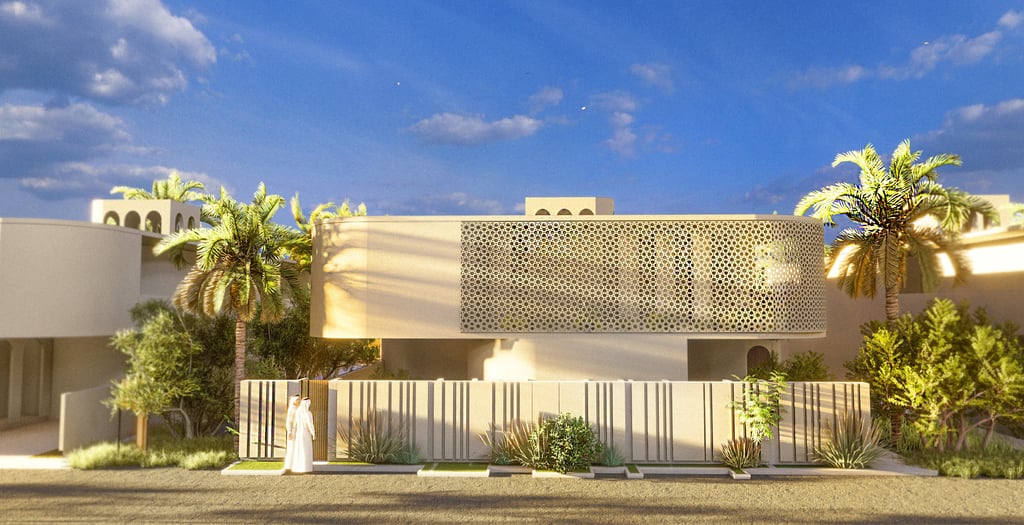

Project Location: UAE
Project Typology: Proposed Residence
Area: 450 sq. m
Design Team: Sooraj Shekhar, Chandni Chhabra, Tayeba Usmani, Joud Chaker, Rudrapalsinh Solanki
Etihad House – The Confluence of Past, Present, and Future
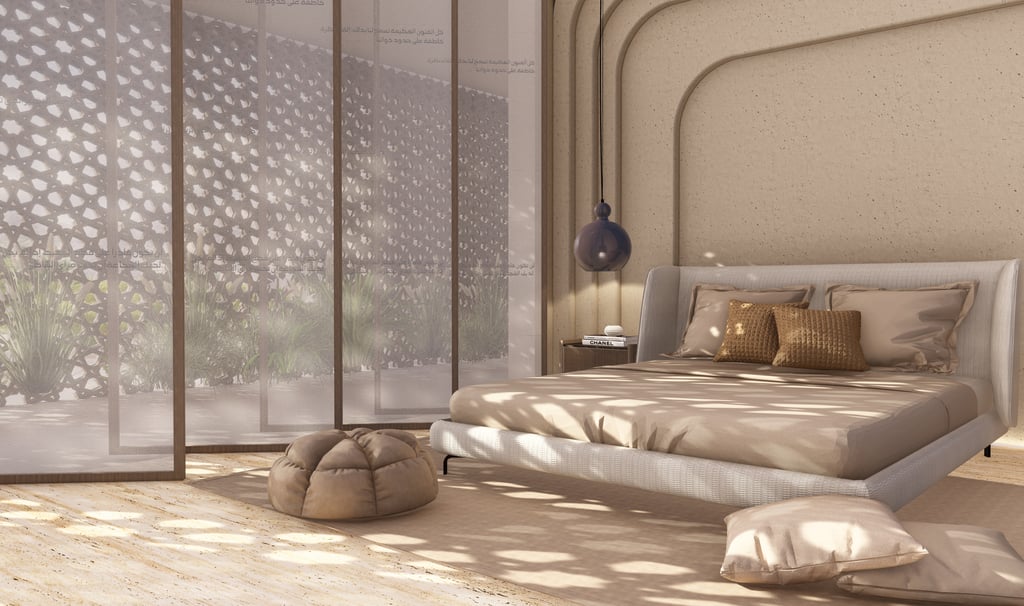

"A nation without a past is a nation without a present or a future."
— His Highness Sheikh Zayed bin Sultan Al Nahyan
The world is undergoing globalization in terms of lifestyle and architecture. Amidst this shift, the UAE distinguishes itself by harmoniously integrating cultural heritage with progressive architectural innovation in sustainable Middle Eastern design.
Emirati architecture – the native design language of the UAE – takes cues from traditions and residents’ lifestyles to showcase creativity alongside striking innovation. It balances material advancement with a strong foundation in cultural traditions, ensuring relevance across eras. This new-age approach prompts designers to revisit the past, serve the present, and chart a sustainable path for the future in environmentally responsive architecture.
Celebrating culture and sustainability, the Etihad House architectural proposal by Moori Interiors demonstrates its unique identity. It expresses modern Emirati living through strategically planned spaces and meticulously crafted design elements. Sprawling across an area of 450 sq. m, this residence is a design proposal for the House of the Future competition – a platform highlighting architectural concepts that are:
Native
Expandable
Affordable
Futuristic
Tailored for the Emirati lifestyle
This sustainable residence concept in the UAE stands on three firm pillars of Emirati architecture. It borrows socio-cultural aspects from the past, evaluates choices for the present, and adopts advanced technology for the future.
Stepping In The ground floor offers two entries – a guest entrance leading to the formal majlis (sitting room) and a private entrance leading residents into a transitional corridor.
Stepping In
The ground floor offers two entries– a guest entrance leading to the formal majlis (sitting room) and a private entrance leading residents into a transitional corridor.
Throughout the design evolution of Etihad House, socio-cultural values played a pivotal role in anchoring spaces and elements. They drove the design towards its core purpose– seamlessly integrating design with the modern lifestyle.
Spatial Components Inspired by Culture
Courtyard
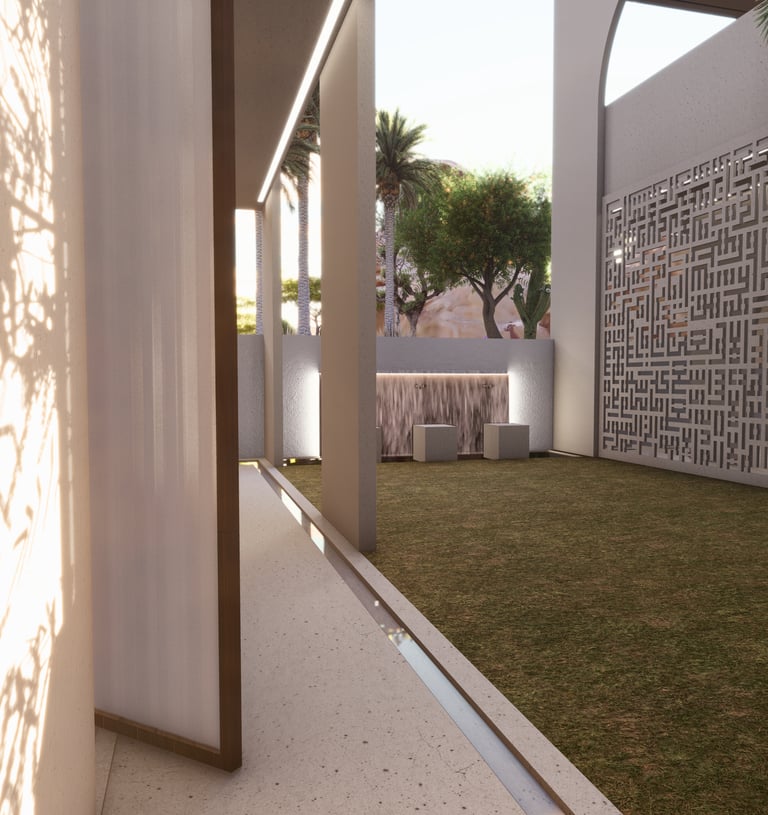

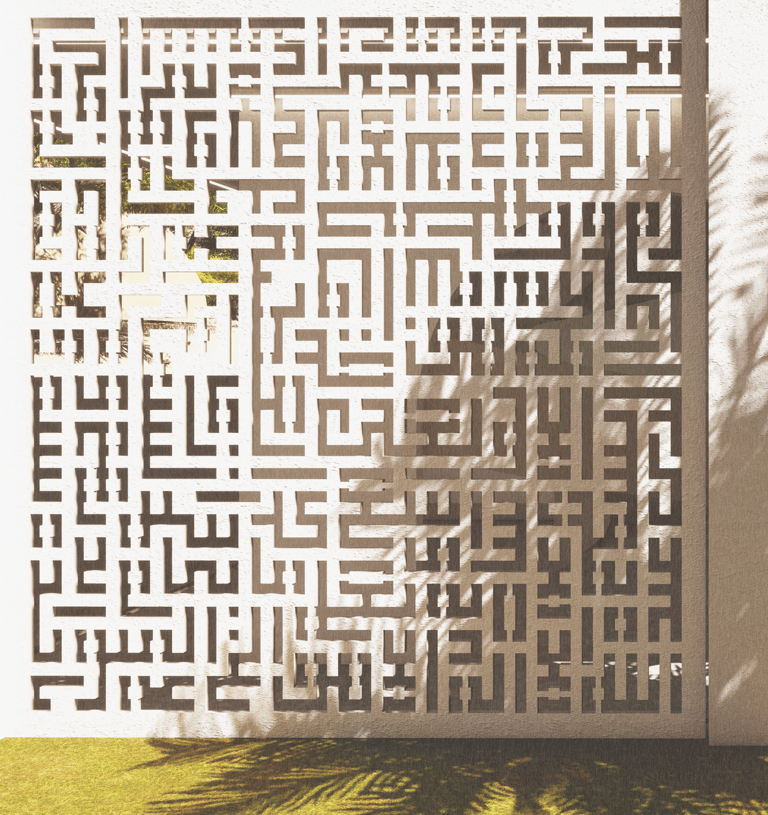

The composition of private and open spaces is oriented around the central courtyard. A dedicated westward zone in the courtyard hosts prayer and ablution, shielded from direct sunlight through screens featuring Kufic calligraphy.
Arabic calligraphy is an artistic expression in Arab and Islamic societies, linking rich history with the future. Strategically positioned screens, inscribed with Kufic calligraphy, filter sunlight into delicate shadow patterns that enrich the courtyard. This green, open space strengthens the connection between architecture and landscape, celebrating the harmony between built and natural environments.
Woven Louver Screens
Etihad House promotes Emirati culture through crafted spaces and design elements. The design creatively curates private and public zoning using woven pivot screens. These are adorned with inspirational quotes from His Highness Sheikh Zayed bin Sultan Al Nahyan, reinforcing a sense of identity and cultural continuity.
While contemporary design offers visual appeal, conscious decisions on traditional textiles and tapestries resonate deeply with local culture.
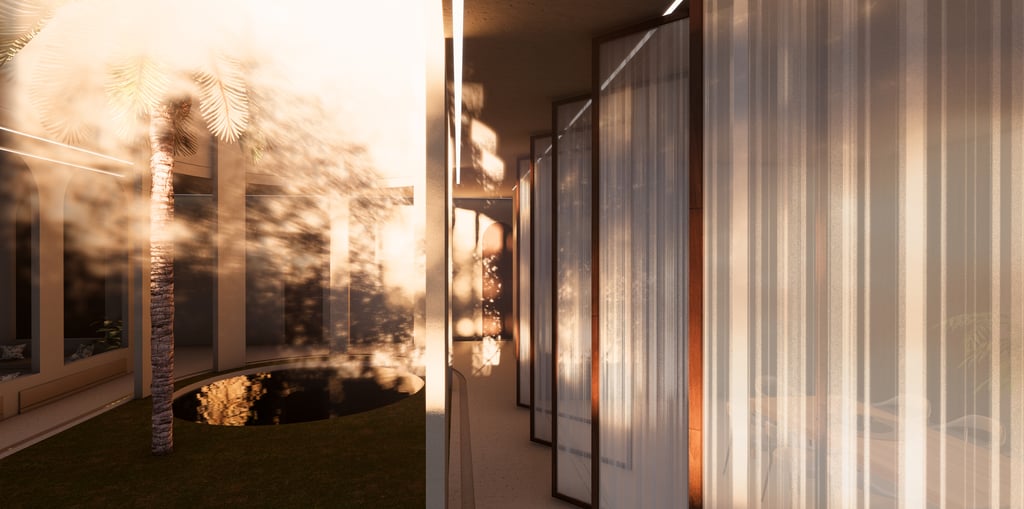

Informal and Formal Majlis
At the heart of modern Emirati residential architecture lies a commitment to hospitality. Etihad House embodies this ethos from the entry, where the formal majlis welcomes guests. Its seamless connection to the dining space elevates the sense of hospitality.
Nestled at the base of the wind tower(Barjeel) is the informal majlis. It provides access for female family members and maintains connectivity with the family dining space and children’s recreational area reflecting the thoughtful zoning typical of contemporary UAE home design. .
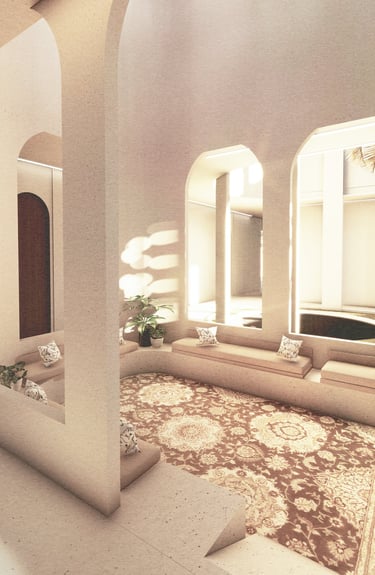

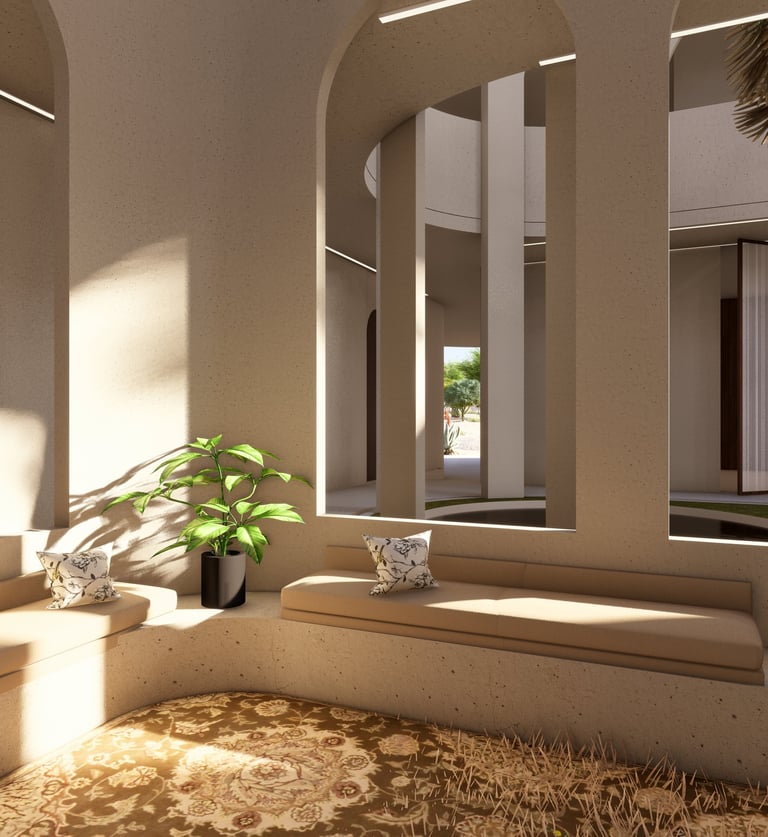

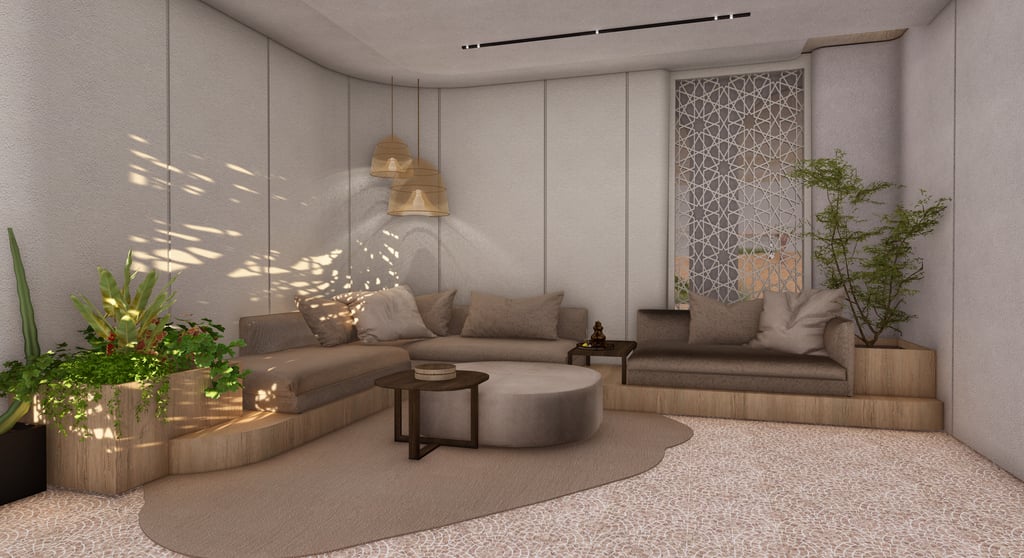

Always Living in the Present
Etihad House embraces a 'Kit-of-Parts' approach, allowing personalisation of spaces based on users' needs. This modular system ensures spatial and functional adaptability for evolving requirements.
The ground floor assembles majlis, utility blocks, a private area, a wind tower, and FRC arch modules. The first floor houses bedrooms, an FRC slab, a private area, utility spaces, and FRC mashrabiya modules.
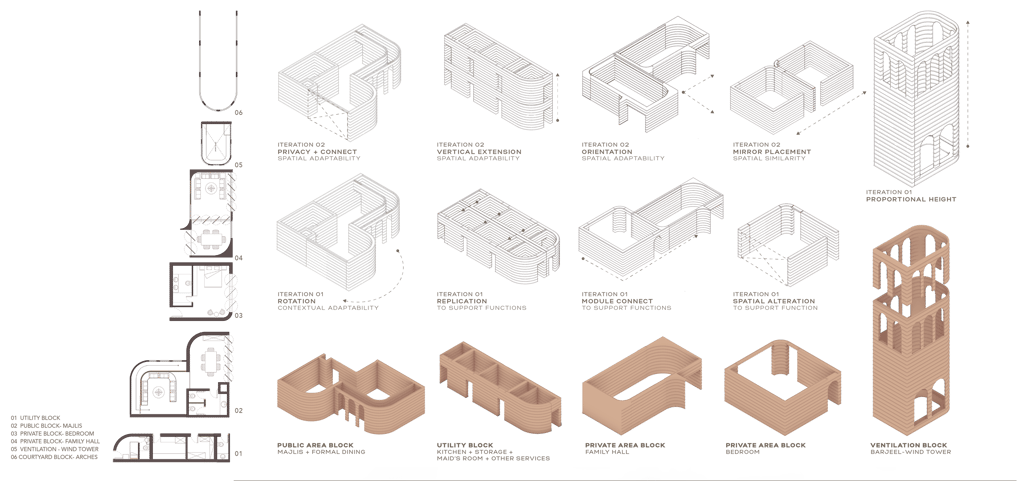

Mashrabiyas
Mashrabiyas—projected windows adorned with detailed carvings—embody the essence of Emirati architecture. In Etihad House, their integration alongside arches supports a sustainable design strategy by regulating direct heat gain. These finely crafted elements enhance thermal comfort while contributing to a rich architectural expression where form and function converge.
They follow a module-to-module connection with the on-site assembly of 3D-printed spatial components and FRC blocks. Culture guides the concept of Etihad House, but present-day necessities shape its implementation—a framework that translates traditional wisdom into sustainable action.
Wall Material
Drawing from traditional construction practices, the material palette was thoughtfully selected. Emphasizing thermal mass properties, the walls mitigate heat gain and maintain a comfortable indoor temperature.
Increased wall thickness enhances insulation and energy efficiency, reflecting a responsible design ethos aligned with broader sustainability goals.
Barjeel / Wind Tower
The wind tower above the informal majlis facilitates natural ventilation throughout the residence, eliminating the need for mechanical systems. This passive system utilises air pressure and temperature differences, enhanced by arches, to create an organic airflow.
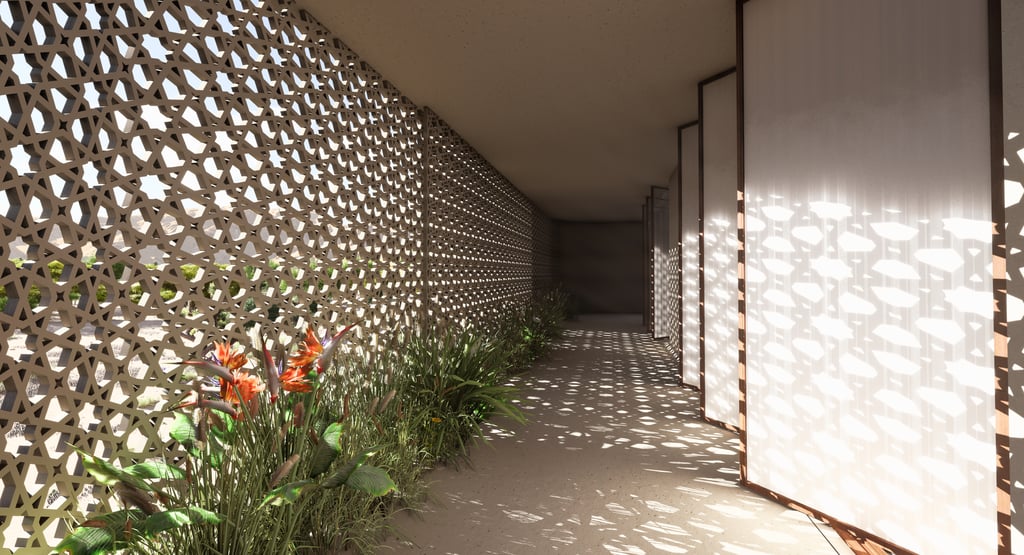

Historical Practices for a Sustainable Today
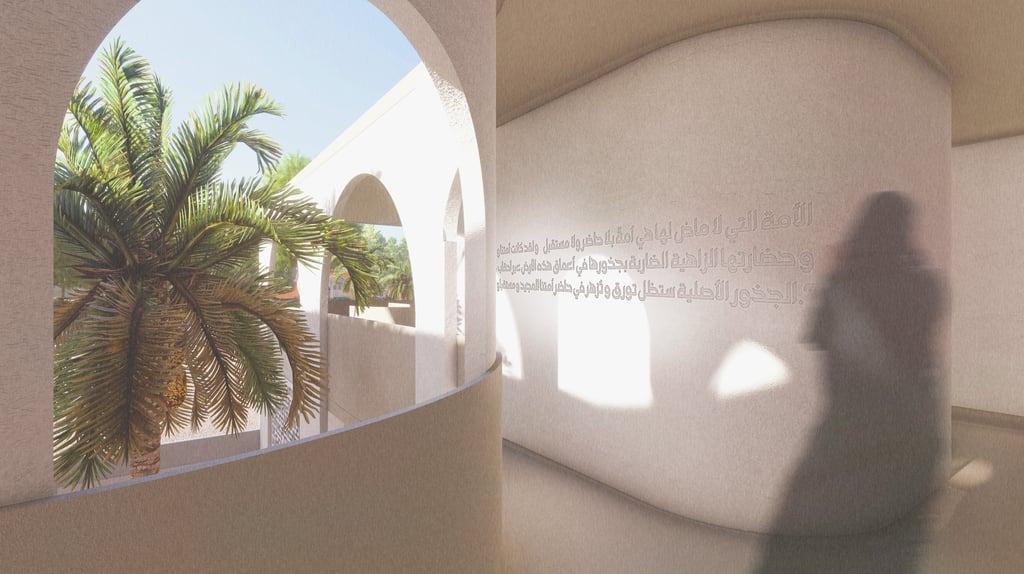

Future-Ready with Bold Concepts
Etihad House goes beyond visual appeal to present a self-sustaining architectural system that responds to future demands. Rooted in cultural identity, its bold, forward-thinking strategies prioritise environmental responsibility.
Integrated Sustainable Systems
Advanced Water Circulation and Passive Evaporation
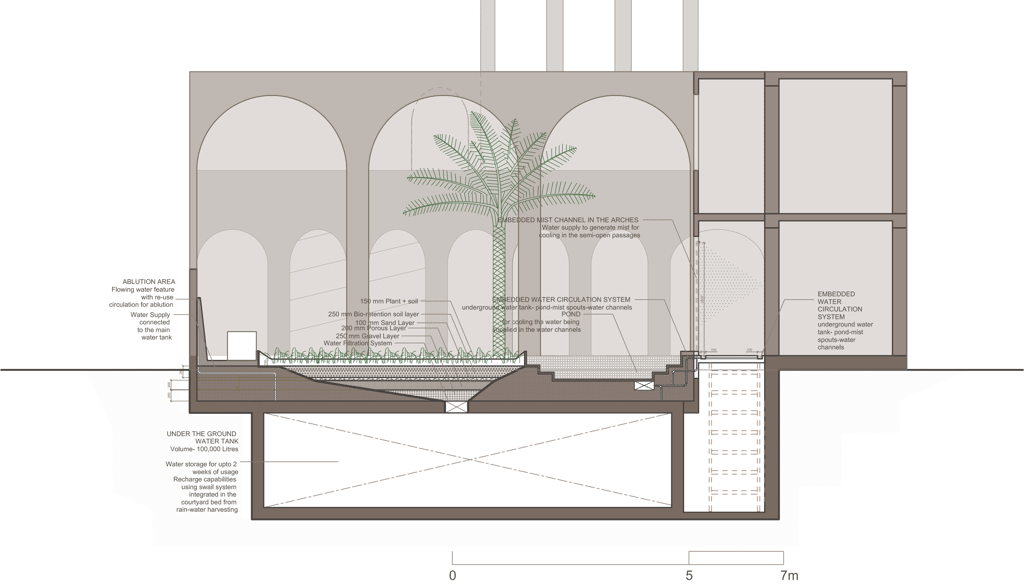

The curation of semi-open spaces offers visual connectivity and embeds water channels for passive air circulation. Past practices inspire this innovative approach, address future challenges, and maintain a cool courtyard passage through mist creation.
Solar Panelled Roof
The sloped roof module integrates solar panels for energy efficiency. Constructed using 3D printing technology and FRC as the primary material, it exemplifies futuristic sustainable design.
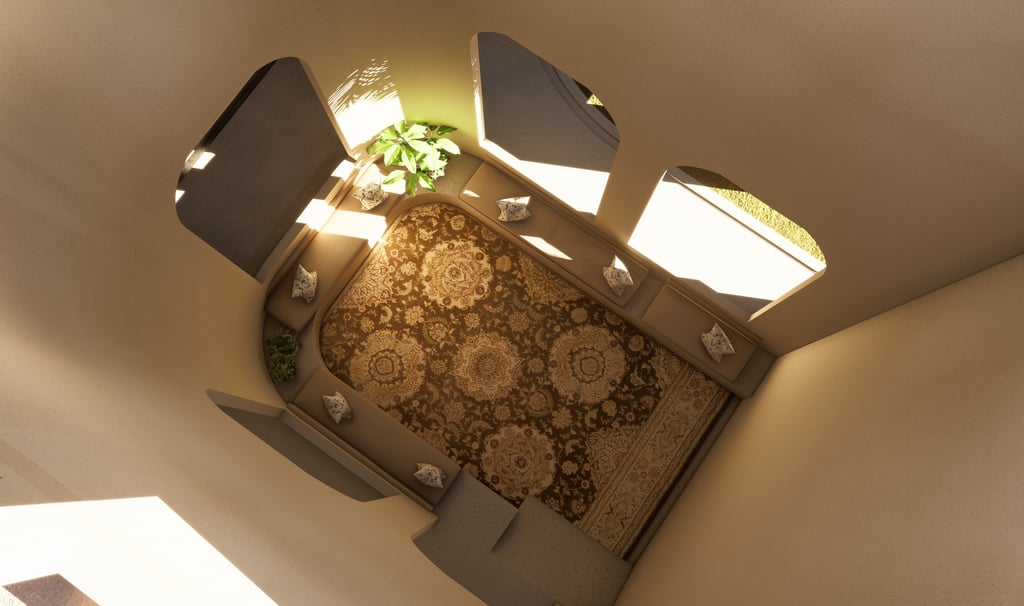

The Beauty in Authenticity
Authenticity is what makes architecture beautiful. Etihad House reimagines Emirati architecture for the contemporary era, preserving cultural roots while embracing innovation. Through thoughtful material use, spatial planning, and sustainable strategies, the residence presents a refined architectural language that is both grounded and progressive. It offers an immersive sensory experience shaped by history, elevated by innovation, and aligned with environmental responsibility.
